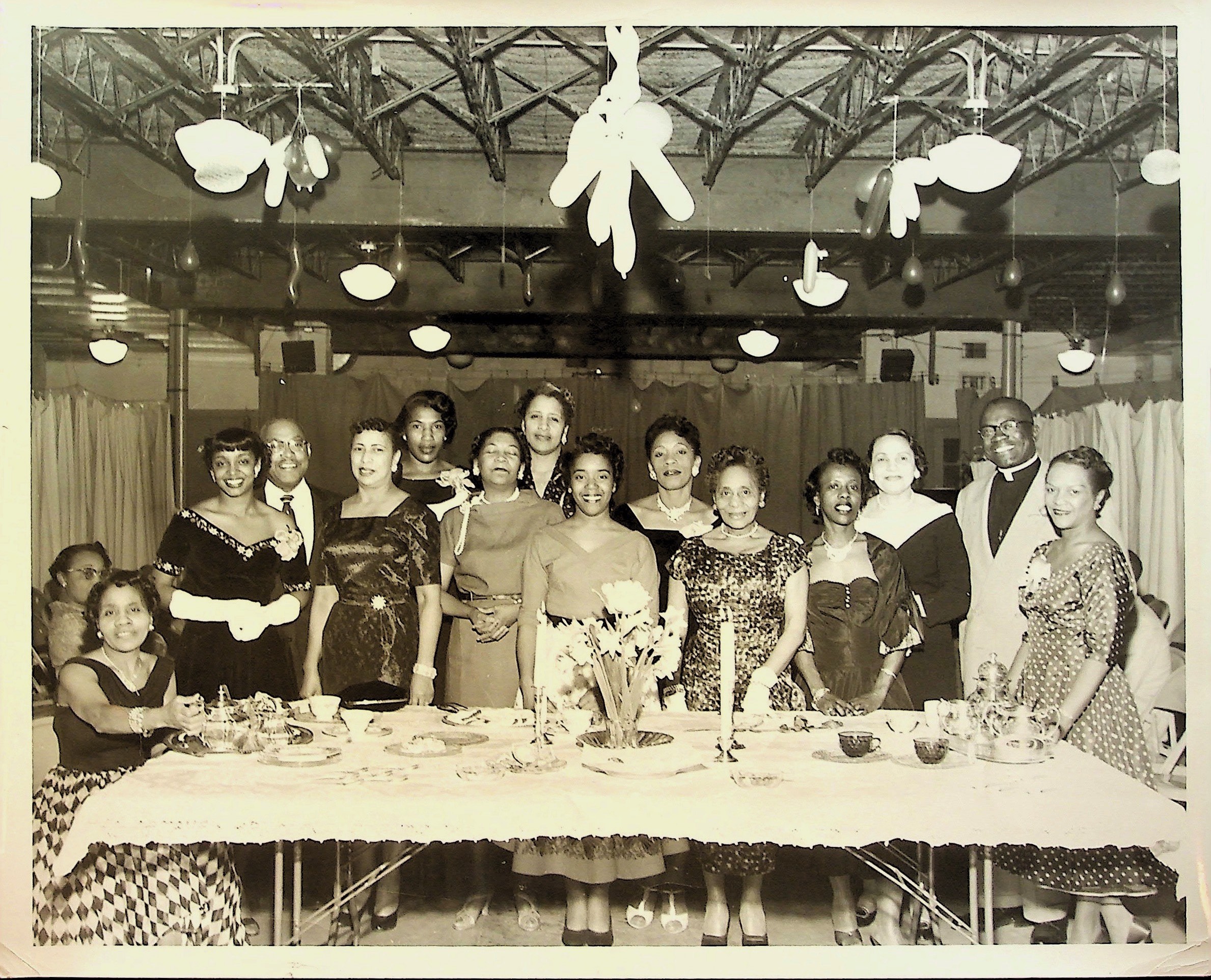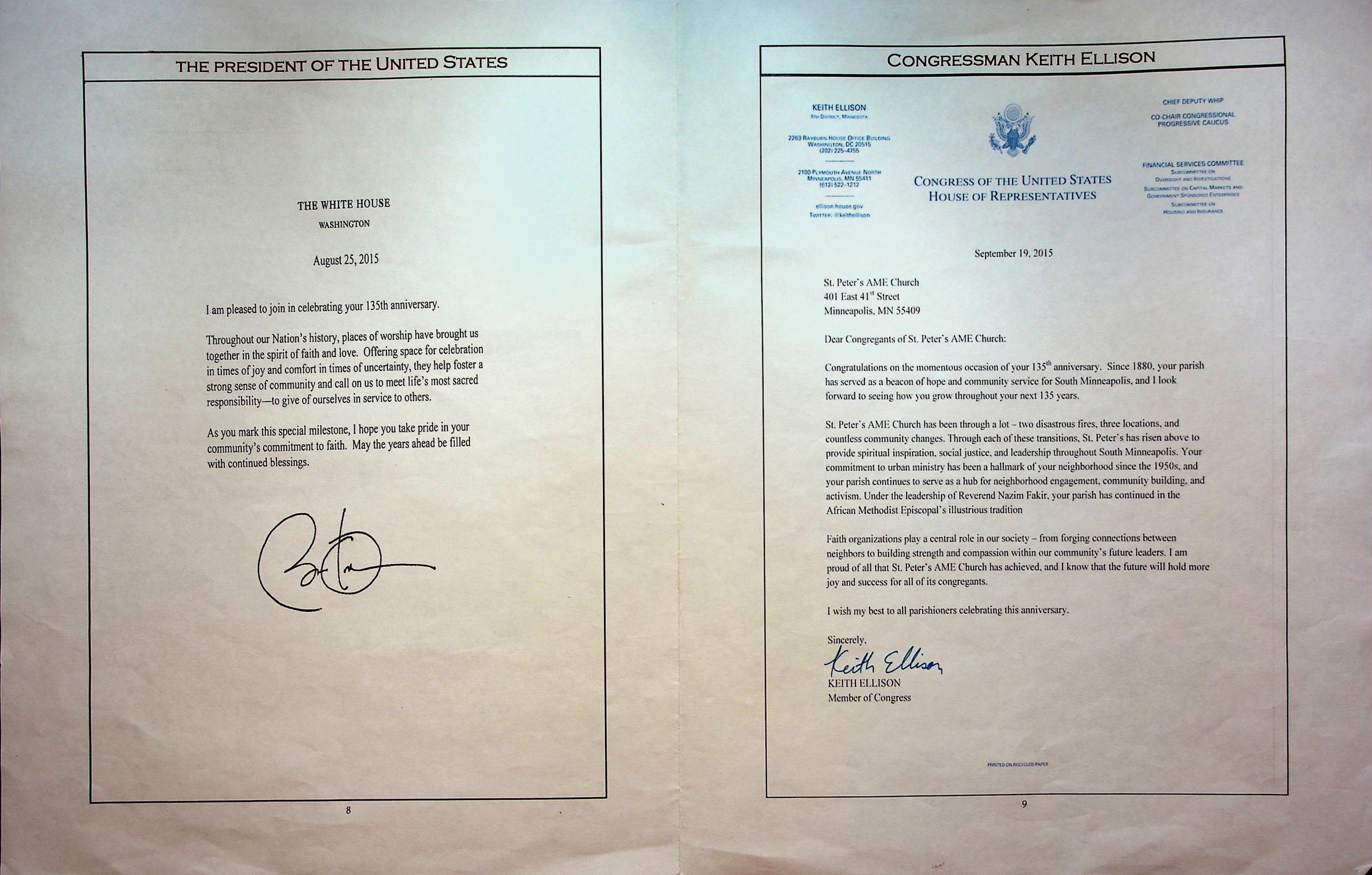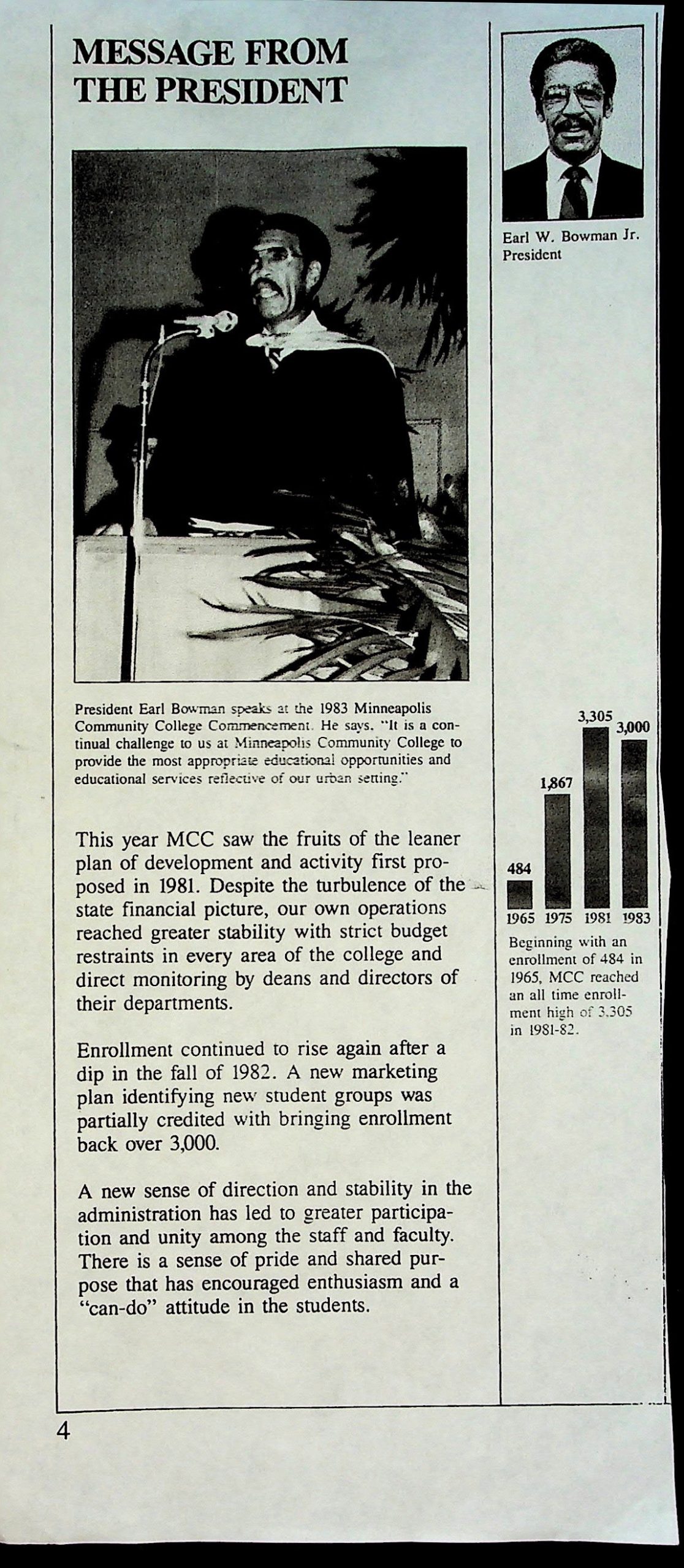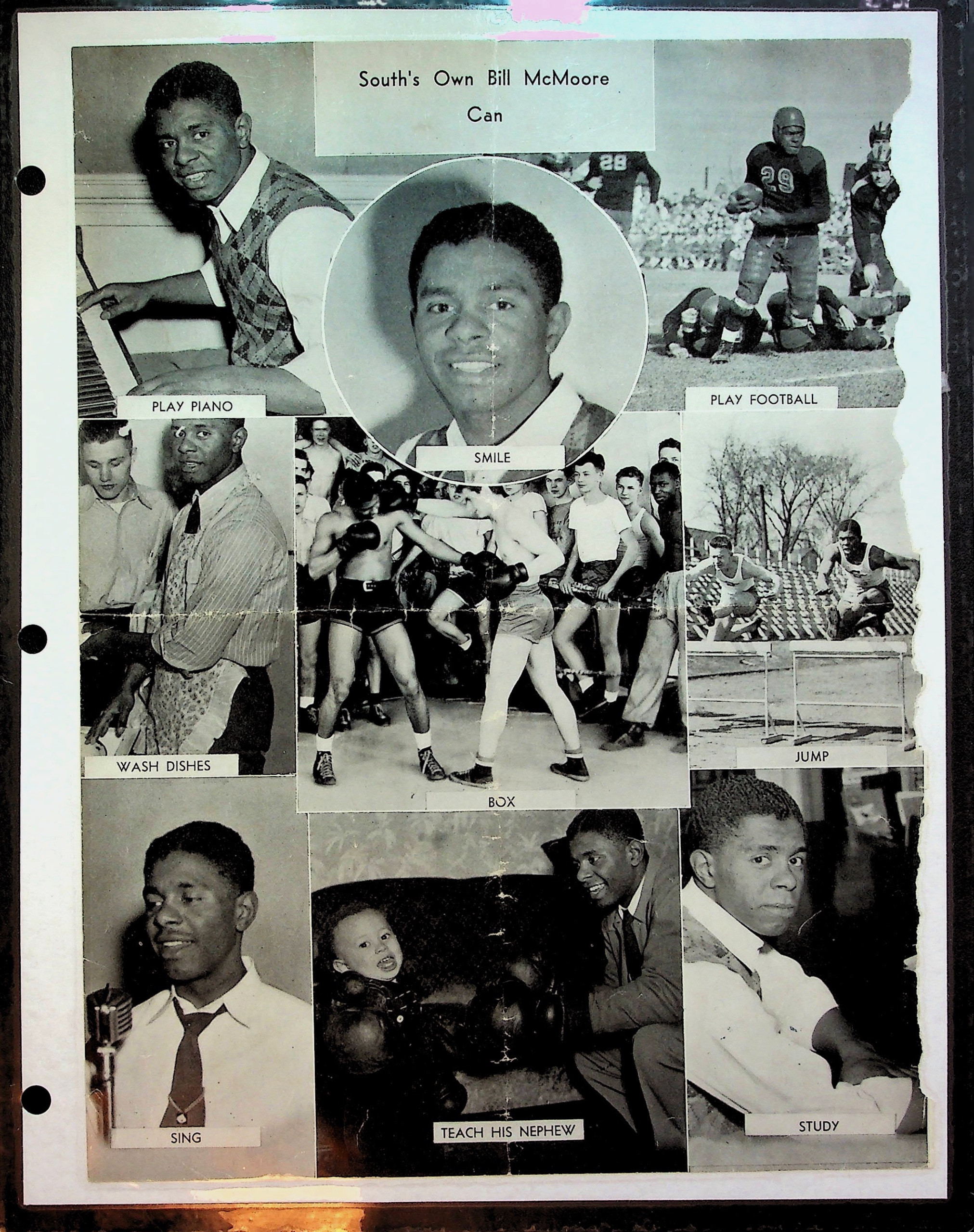St. Peter’s African Methodist Episcopal Church Exhibit
By Noah Lafferty
The following items have been created from the information contained within the materials archived from the collection of records located at St. Peter’s AME Church, in south Minneapolis, and from independent research undertaken by the BCAP research team. The presentation of this exhibit is aligned with the goals of the greater BCAP project which strives to digitize and preserve the records of historic Black churches.
The Migration of Black Congregations (1843 – 2022)
The map below depicts the locations of thirty-eight Black Christian congregations founded between 1843 – 2008. The blue points indicate congregations founded before 1956, while the red points indicate congregations founded after 1956. The shift in data classification being demarcated by 1956 is representative of the Black community of MSP prior to, and after the construction of Highways I-35W and I-94. The colored outline on the map visualizes the boundaries of the historically African American neighborhood of Rondo, a significant center of Black culture in the Twin Cities. This map depicts a trend in the location of Black churches in the Twin Cities transitioning from being primarily located in historically African-American neighborhoods to regions of the cities not typically associated with historically prominent numbers of African Americans living within them. This demonstrated migration of newly constructed churches outside of the boundaries of historically African American neighborhoods appears to indicate a correlation between the construction of highways I-35W and I-94 and the dissolution of historically Black communities in the Twin Cities. This observed correlation corroborates the extensive qualitative evidence from oral history interviews conducted by the BCAP research team that detail the construction of I-35W and I-94 being tremendously disruptive to the Black communities in the Twin Cities, with several accounts of businesses and houses being leveled which resulted in an exodus by Black Americans from the historic boundaries of African-American communities in the Twin Cities. (Note: Churches are marked as founded in 2022 if the year of founding is unknown.)
Locations of Historically Significant Events to the Development of St. Peter’s AME (1880 – 1985)
This map has been constructed based upon the compiled materials from St. Peter’s AME located in the church educational materials and church media booklet bins on the digital archive website for BCAP. This map demonstrates the migratory history of St. Peter’s AME as the congregation at several critical points in its history found itself fighting an existential battle to thrive in a city frequently embroiled in racial upheaval during the formative years of the church. The nomadic nature of the congregation before the year 1893 was the result of a struggle to secure a permanent location for the church’s congregation due to the lack of consistent financing leading to the brief leasing of temporary locations before securing a permanent location in the mid-1880s that would be lost by foreclosure in 1887. The church would swiftly rebound from the repossession of its financed property by securing a permanent location in 1888. The purchase of this property would mark the beginning of a new era of migration that would be driven primarily by suspected arson, with the two periods of congregational migration beginning in 1893 and 1951 being the result of alleged arsonists destroying the building that housed the congregation. It is worth noting that upon the conclusion of a migratory period in the congregation’s history, the permanent location of St. Peter’s AME has consistently shifted southward in Minneapolis which could indicate the presence of a yet undiscovered or poorly understood mechanism of discrimination existing in Minneapolis. This observable trend creates a pathway for further inquiry into this subject matter of the migratory nature of other Black congregations in Minneapolis-St. Paul is similarly consistent with the experience of St. Peter’s AME Church.
A Digital Tour of St. Peter’s AME History (1880 – 1985)
This tour describes the events in the St. Peter’s AME migratory map. This map tour demonstrates the rich sense of purpose and meaning cultivated by the congregation of St. Peter’s AME despite the attempts by suspected arsonists to destroy the congregation through forced migration. This is the story of St. Peter’s AME and its congregation.
Image Gallery
Below is a brief glimpse into the historical collection of St. Peter’s AME Church. These items have been selected because they demonstrate the rich culture that was created within the congregation.




Vermont Avenue Baptist Church Documentary Short
By Timothy Rainey II